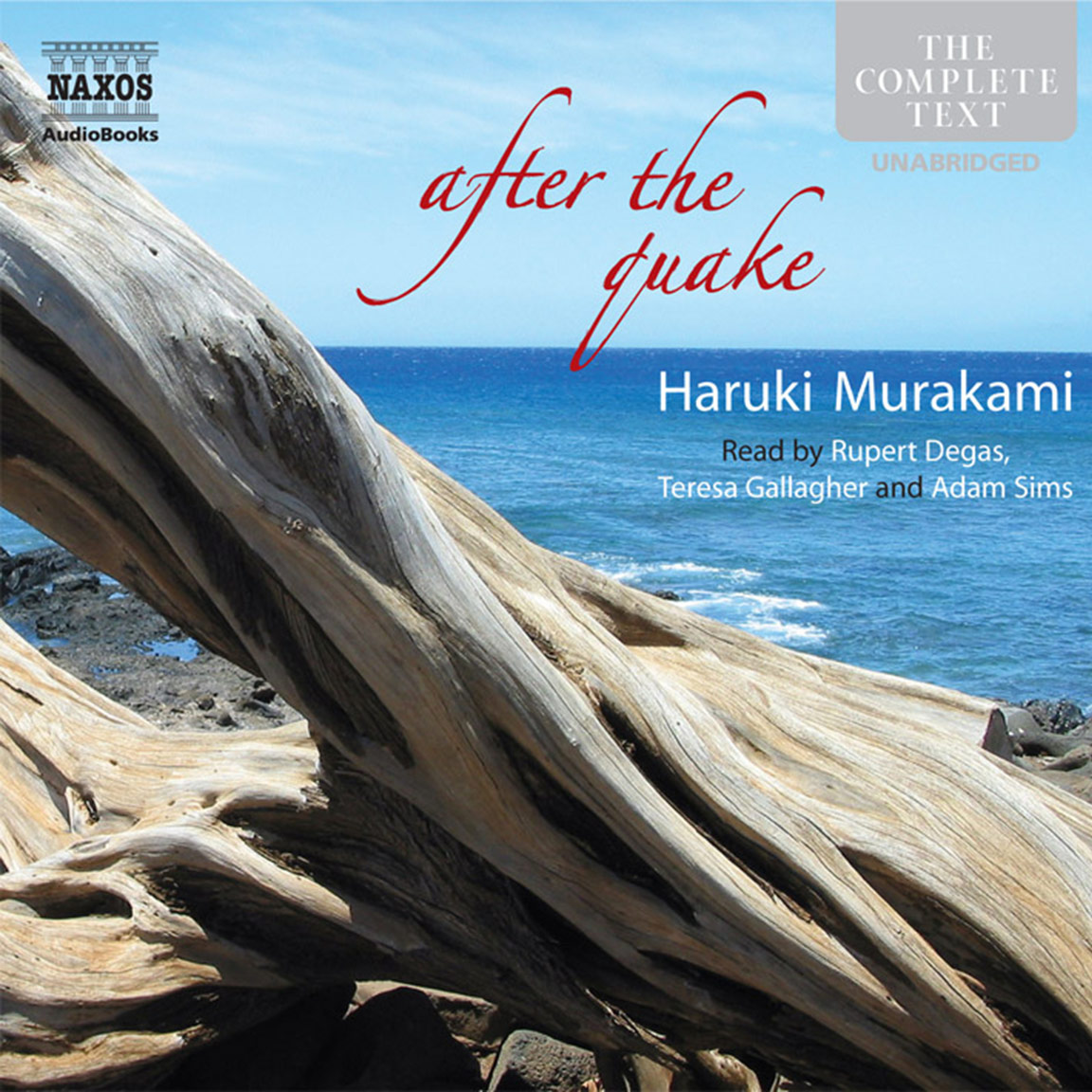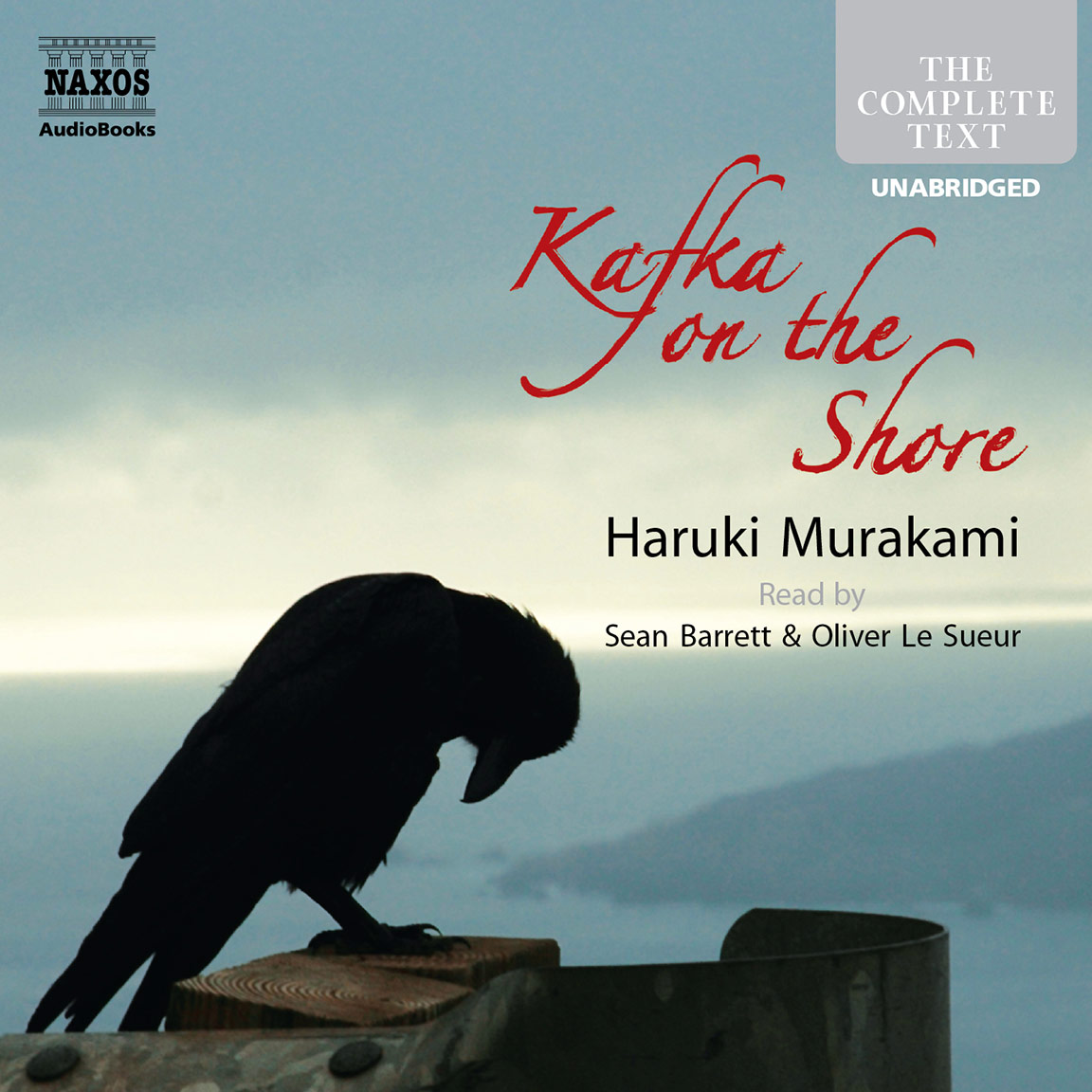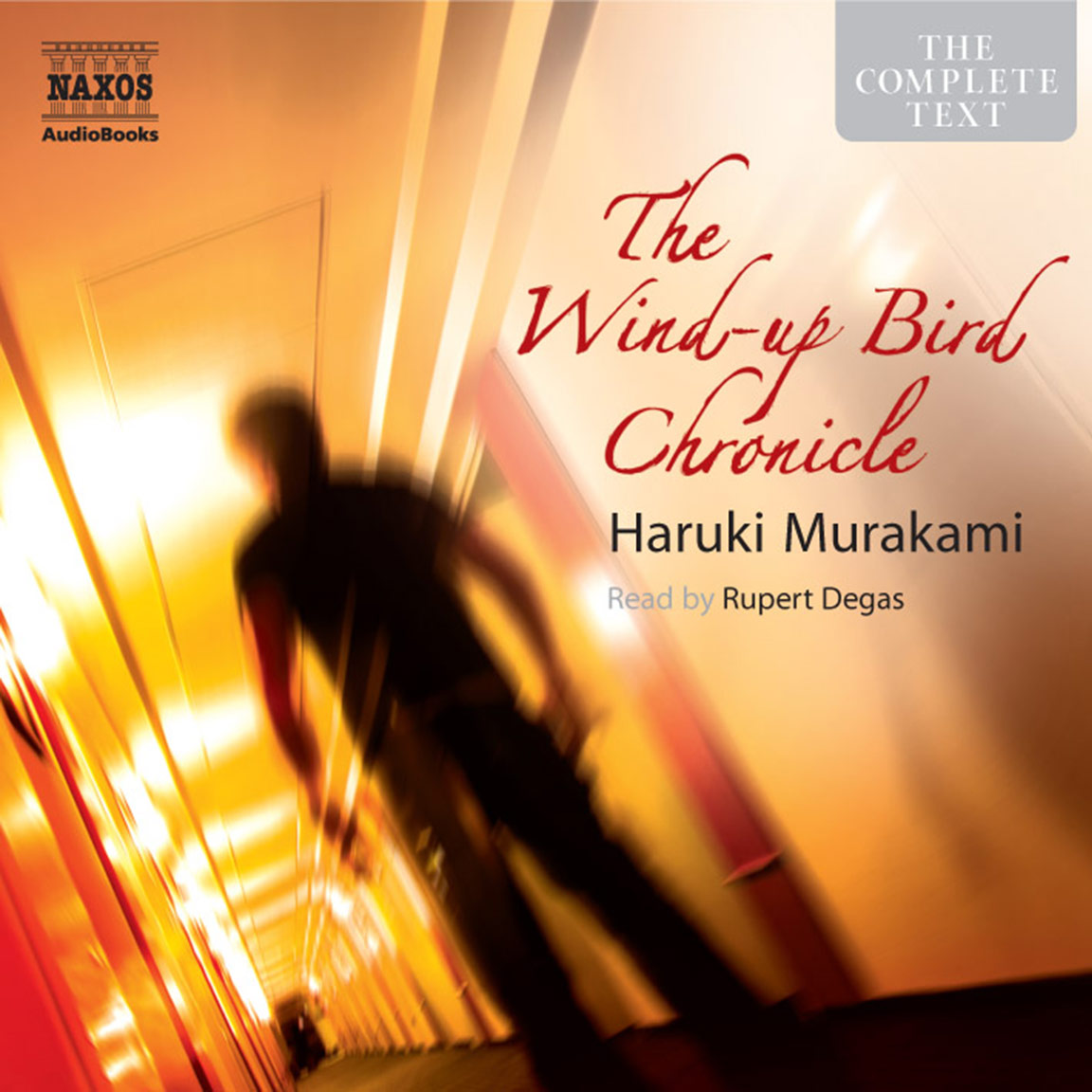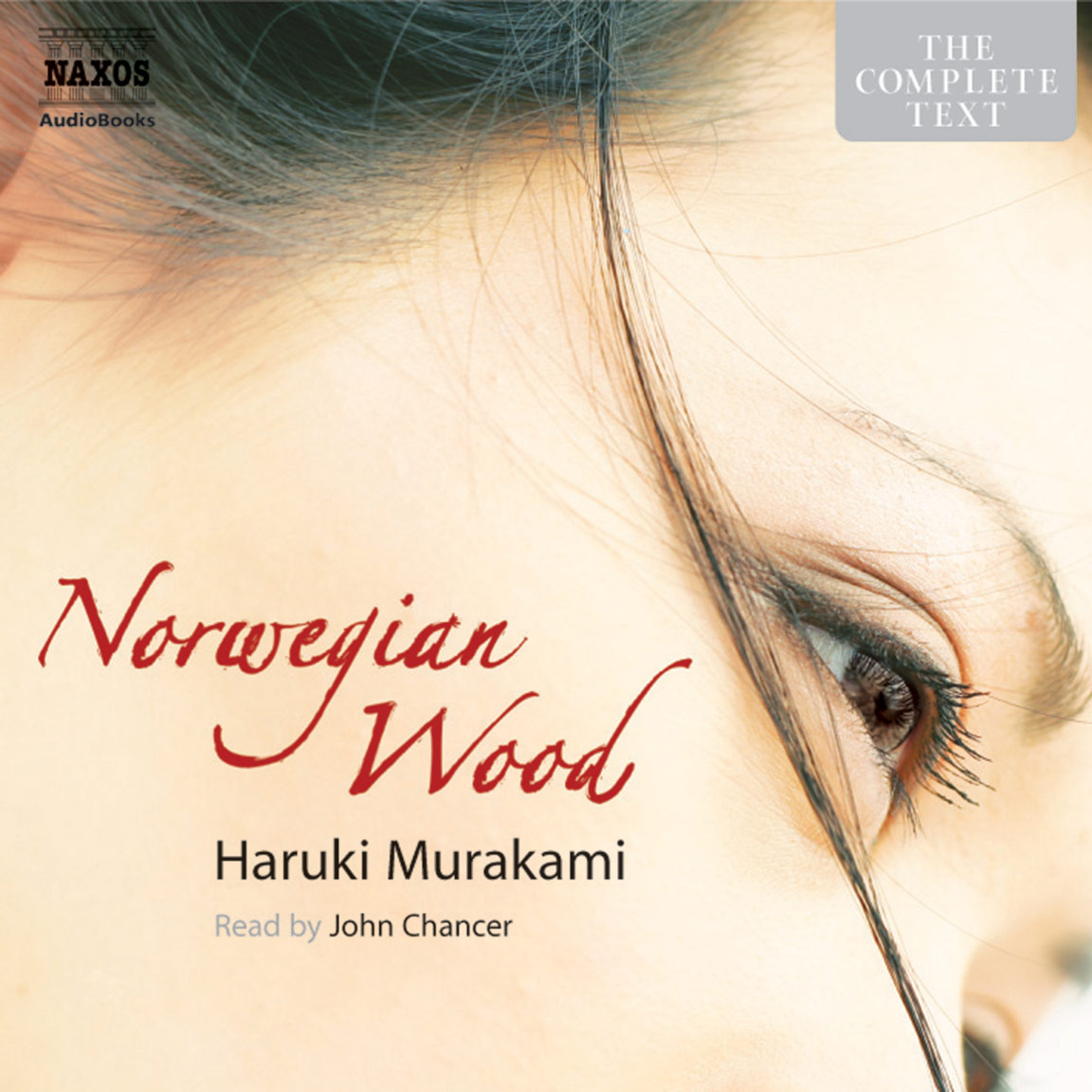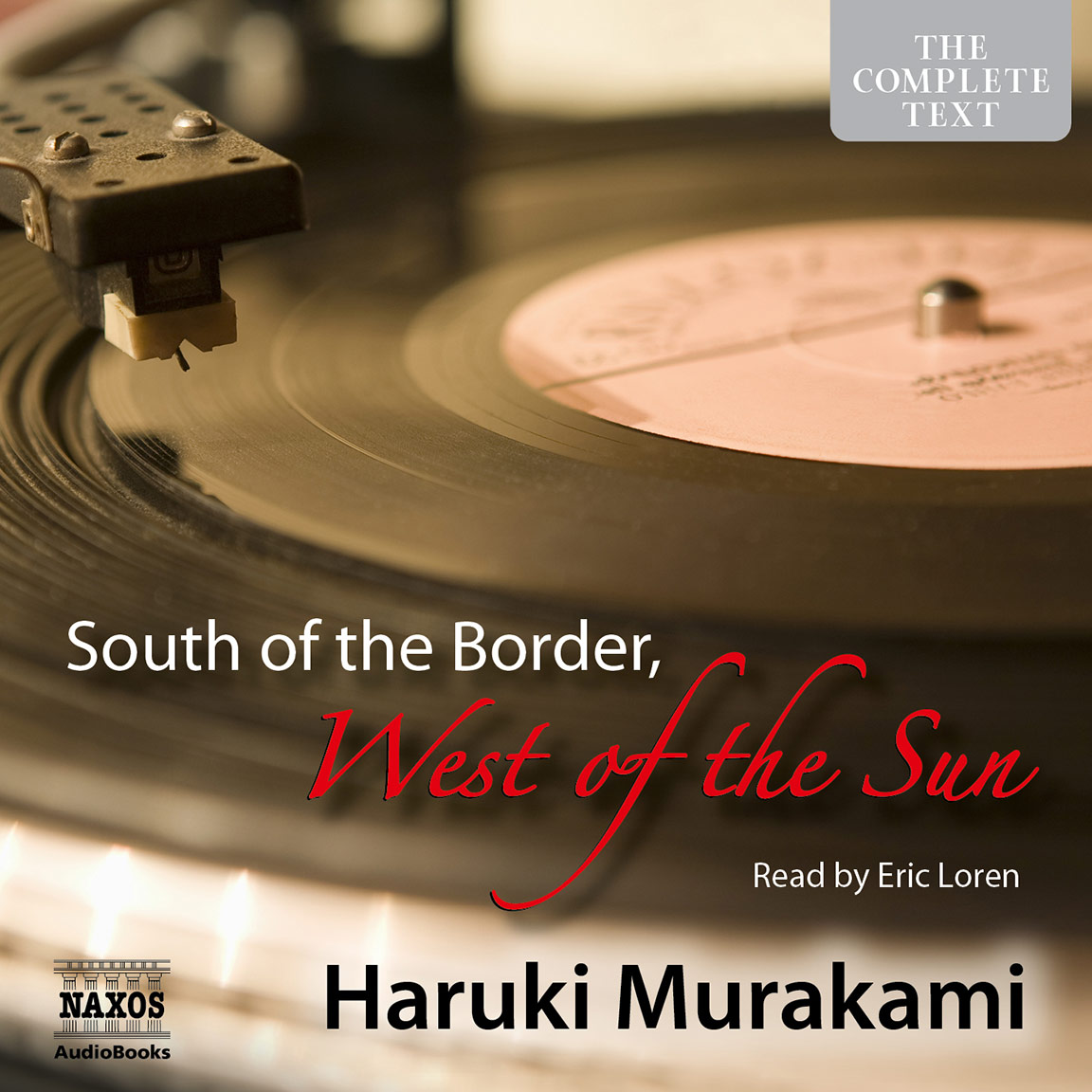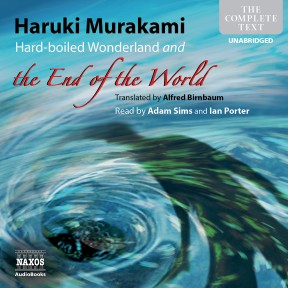
Audio Sample
Haruki Murakami
Hard-boiled Wonderland and the End of the World
Read by Adam Sims & Ian Porter
unabridged
Information is everything in Hard-boiled Wonderland. A specialist encrypter is attacked by thugs with orders from an unknown source, is chased by invisible predators, and dates an insatiably hungry librarian who never puts on weight. In the End of the World a new arrival is learning his role as dream-reader. But there is something eerily disquieting about the changeless nature of the town and its fable-like inhabitants. Told in alternate chapters, the two stories converge and combine to create a novel that is surreal, beautiful, thrilling and extraordinary.
-
Running Time: 14 h 01 m
More product details
Digital ISBN: 978-1-84379-380-9 Cat. no.: NAX33812 Download size: 204 MB BISAC: FIC000000 Released: April 2010 -
Listen to this title at Audible.com↗Listen to this title at the Naxos Spoken Word Library↗
Due to copyright, this title is not currently available in your region.
You May Also Enjoy
Reviews
Immersing yourself in a Murakami novel is like entering into an Escher picture, an unsettling world of the mind where urban Japan, contemporary America and a nebulous ‘wonderland’ coexist; where oddly rootless characters seem real but anonymous, Two narratives intertwine: in one, a student newly arrived In a strange town is set to read the dreams locked In library skulls; in the other, a scientist is employed to keep invisible, information-stealing creatures at bay, The American narration with its Japanese words exactly captures the mood.
Rachel Redford, The Observer
Murakami’s demanding 1991 novel, newly available on audio, features two parallel narratives reflecting on such issues as death, paranoia, information, freedom, and choice. In the first, read by Adam Sims (After the Quake), an unnamed protagonist becomes involved with an unusually helpful reference librarian, an eccentric scientist, two dangerous thugs, and even more deadly creatures living beneath Tokyo. In the second narrative, read by actor Ian Porter, a separate protagonist finds himself in a walled town and reading the dreams of others with the aid of another librarian. The narratives are told in alternating chapters and gradually intersect. Sims masterfully conveys his hero’s bewilderment at the odd circumstances of his life, while Porter is more sombre in his performance, employing a different kind of tentativeness to convey his character’s uneasy adjustment to a strange new world. This unique blend of noir, sf, and fable owes a considerable debt to Jorge Luis Borges. Fans of Murakami and offbeat literary fiction will find much to like here, as will, naturally, librarians.
Michael Adams, CUNY Graduate Ctr. Lib., Library Journal
Murakami’s two stories – which alternate, chapter by chapter – are told by two narrators, who split duties here. Ian Porter is the baritone, thoughtful and deliberative; Adam Sims is lighter spirited, flightier, and more amused by the bizarre comedy of Murakami’s puzzle box. Both readers are well chosen, expertly picking their way across the minefield of this intoxicating, perplexing story. And their balancing act mimics the book’s alternation of tones, styles, and stories. The recording is studded by occasional studio sound effects that are hardly necessary, but do manage to cleverly amplify the woozy, trippy disorientation of the tale.
Publishers Weekly
Sound Commentary Starred review
This novel with two titles was Murakami’s second, published in 1985 in Japan; the English translation was published in 1991. For those of us familiar with his more recent titles (Kafka on the Shore, The Wind-up Bird Chronicle) the newly released audio version of this novel is a great opportunity to explore his earlier work in a different medium.
The two narratives are presented in alternating chapters, weaving a double helix of narration that keeps main characters/storylines dancing around each other, but never really touching. Towards the end things start to overlap and the connections you only suspected start to become tangible.
The two main characters are represented by two readers. The odd numbered chapters, read by Adam Sims (a film and stage actor who trained in London and has worked with the Royal Shakespeare Company), follow the life of a calcutec, a human that is being exploited by the government for his unique mental capabilities. Calcultecs are trained to intake massive amounts of information, scramble it in their brains, and then regurgitate it when presented with the proper password, which in this case is ‘the end of the world.’ The even numbered chapters, read by Ian Porter (a television and film actor whose credits include Saving Private Ryan, The Bourne Ultimatum and Gulliver’s Travels), follow the life of a semiotec, also an extension of government, but a lesser calcutec, if you will. The government seems to be fractured and working against itself in this world. The two characters don’t interact with each other, but who’s to say they are not one and the same in different places along the same timeline?
Murakami is the master of stream of sub-consciousness. He explores the nuances of human identity through brain activity, i.e. capacity, input, interpretation, use. What is the self? Does intelligence support or obscure humanity? His characters struggle with the age old utopian questions. Does the sacrifice of individuality make for a happy whole? He approaches it on multiple levels: the ‘we-ness’ of eastern culture vs. the ‘I-ness’ of western culture, the seeming absurdity of government controlling disciplines that appear rigid but actually require creative thinking, the concept of ignorance is bliss. The loss of self is faced by both characters.
The distinct voices of the two readers are essential to keep track of the story. It would be easy to get lost if there were only one narrator. The strong, energy of the calcutec, is balanced by the calmness of the semiotec. Both are approaching their ends as they know it. Readers will love the way Murakami’s mind works, and he is good at sharing his thought. He describes two elevators and gets you to think about which one best represents your life. He talks you into imagining the earth shaped like a coffee table. He makes you ponder the similarities between your shadow and your alter ego, or your primary ego. The storylines are engaging, sometimes quite imaginative fantasy, but always thought provoking. Your mind will wander back to this book time and again as small everyday occurrences remind you of these characters and their circumstances.
Did I mention that unicorns comprise a common thread that weaves between these two stories?
Debbie Henderson, Sound Commentary
Booklet Notes
Reading a novel by Haruki Murakami is like hearing the music for Noh theatre played by Charlie Parker or Thelonious Monk. It manages to be at once deeply rooted in Japan yet imbued with an Americanised universality which places it in the realms of jazz, rock and pop, TV shows, fast food and film noir detectives. This novel even has Hard-boiled in the title. This, of course, is no accident, and it indicates how profoundly Murakami is allied with Western culture. As does the use of the word Wonderland: in the author’s world, middle-ranking, anonymous and always unnamed office-workers almost always fall down metaphorical rabbit-holes into a bizarre, absurd netherland where the increasingly implausible swiftly becomes the banal reality.
It is not that surprising to see Japanese writers exploring the nature of Japan’s relationship with the rest of the world, but Murakami stands out for several reasons. Primary among them is his tackling of the matter with such openness and directness. When his work was first published, the prevailing ultra-conservatism of Japan’s arts world made him an outsider and a radical; he was considered too accessible to be a serious writer. This was in part because his central characters were fans of Western music, art, literature and pop culture. What’s more, these interests weren’t just discussed in academic terms – they were actively embraced, enjoyed, and used as reference points for their emotions. And his characters did all this while preparing endless rounds of traditional Japanese foods, in Japanese cities, doing slightly more than averagely interesting but nonetheless typical Japanese jobs before falling precipitately off the ‘normal’ cliff into a sea of alarming inexplicability – while still seeming to be in urban Japan.
As the book
progresses,
the association
and coalescence
between the two
narratives
becomes clearer
Urban and suburban Japan is what Murakami knows best. Born in 1949 in Kyoto, much of his childhood was spent in Kobe. Both his parents were teachers of Japanese literature, but his own interests always pointed westward, from the core 19th-century English novels through to the works of Salinger, Carver and Capote, which he has since translated. Jazz became a passion, to such an extent that after university, where he studied film and theatre, he set up a jazz café called Peter Cat (he is also very fond of cats). Murakami always wanted to be a writer, but did not attempt to write until he had something approaching a revelation while watching a baseball match. His first two novels, published in 1979 and 1980, were cult hits, despite his own reservations about them (he was not sure he ever wanted them translated), but A Wild Sheep Chase, Hard-boiled Wonderland and the End of the World and Norwegian Wood made him into something of a cult himself – he became a huge star in Japan, and fled the attention to travel and then settle in America. He was also fleeing Japan the place, for his discomfort with and disdain for certain of the country’s obsessions (the salary-men’s servitude to the capitalist machine and the traditions) was powerful. His role as an outsider is crucial to his work, but this shifted dramatically after the Tokyo poison-gas attacks and the earthquake that destroyed Kobe, both in 1999. He returned to his homeland and felt a new sympathy for the people and the place. He still lives there.
Hard-boiled Wonderland and the End of the World is his fourth novel, published in Japan in 1985, but it reads like a much more mature work. Many of his works are created with no clear idea of how they will end, the author being happy to let the tale unfold in his imagination as he writes. But Hard-boiled Wonderland and the End of the World, for all its many ambivalences, is tightly structured. There are two narratives, told in alternate chapters. In the first narrative, set in a slightly futuristic Japan, the unnamed narrator is one of a few people, known as Calcutecs, who have the ability to encrypt information. This ability is used by the governmental establishment, the System. There is a counter-organisation, however, known as the Factory, which employs Semiotecs to steal what information they can. The narrator takes on a job for an extremely eccentric scientist in a decidedly strange office, itself linked to an underground chasm where the scientist’s experiments in ‘sound reduction’ are also used to keep invisible but deadly creatures called INKlings at bay.
The second narrative is significantly less frenetic in pace and style. A new arrival at a strange town is gradually introduced to its very particular ways. Everything is very still and slow, measured and precise, while being also inchoate, misty and dream-like. It is hypnotically appealing but somehow sinister in its quietude; the landscape of a fable without the certainty of a happy ending. The narrator has arrived in this place because it is his role to read the dreams that are locked in the numberless skulls in the library.
As the book progresses, the association and coalescence between the two narratives becomes clearer. Both narratives explore the ideas of consciousness, imagination, self-determination, the nature of identity and much more; one narrative does it using the format of a sci-fi thriller, the other via a disconcerting fairy-tale, but both are dryly humorous with a range of truly extraordinary characters.
The understated manner of his narrators is an element of Murakami’s artfulness. The narrators (in the Hard-boiled Wonderland sequences particularly) seem unaware of the absurdities they face, unable to comprehend or comment on them. Their rather prosaic observations, while comically counterpointing the world they inhabit, are also those that had, and have, the most immediate resonance with the book’s first readers. What Murakami captures (here and elsewhere in his work) is the sense of being caught in a world where nothing coheres. Since the traditional ways aren’t sufficient, and the new ways are superficial, there is no satisfactory answer to the overwhelming concerns of mortality. Murakami says this with an evenness of narrative tone, a matter-of-factness, which disguises the genuinely existential fear and pain that his characters are facing. All this wealth, all this know-how, all this success – and so what? Managing to survive in a society they cannot control, and faced with ineluctable death, they might as well have another beer. What else is there to do?
Hard-boiled Wonderland and the End of the World is funny, accessible, and vibrantly imaginative. It is also deeply humane in its criticism of a world in which the individual is repressed for the benefit of a faceless society. No wonder the traditionalists didn’t like it.
Notes by Roy McMillan
